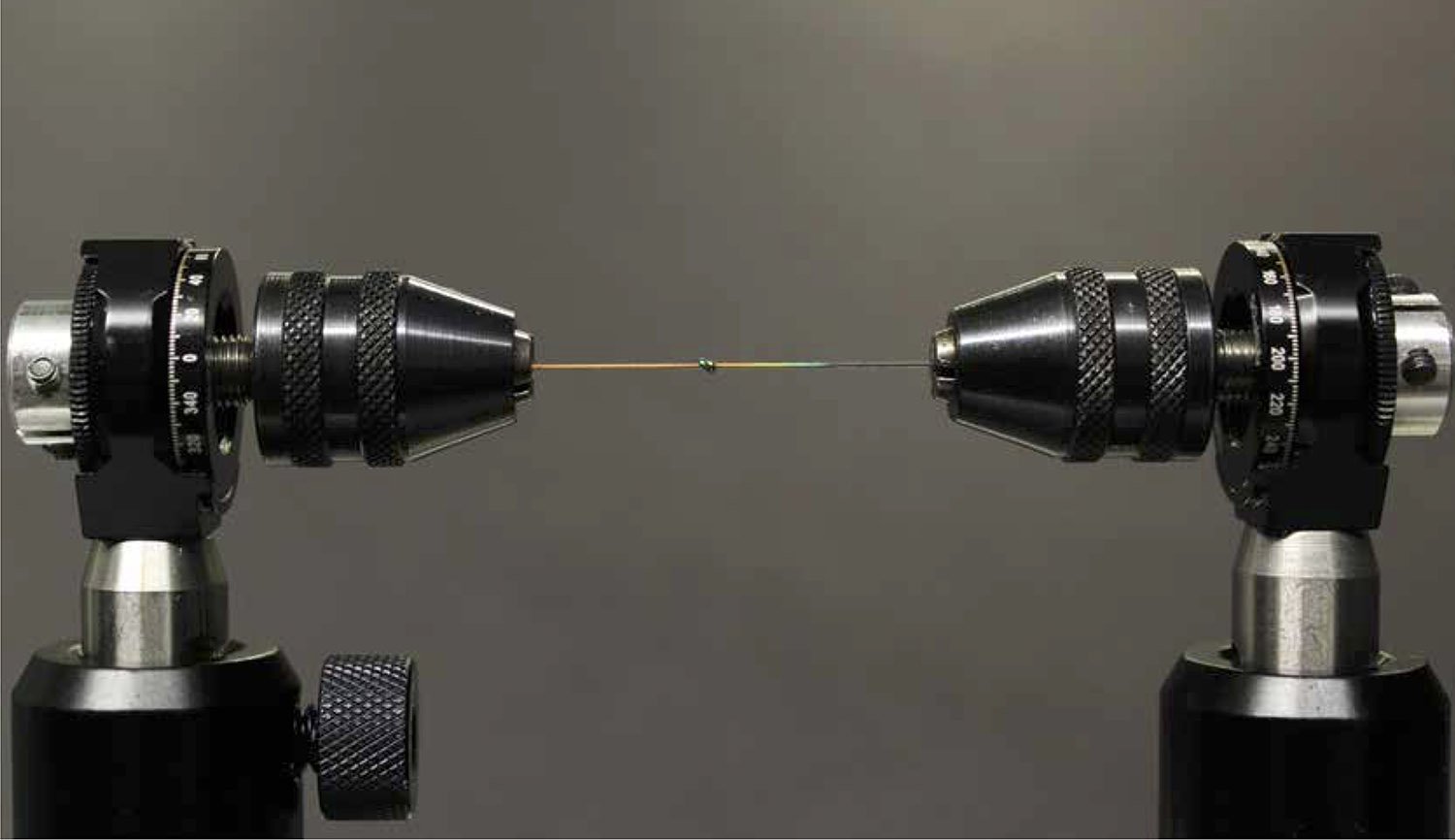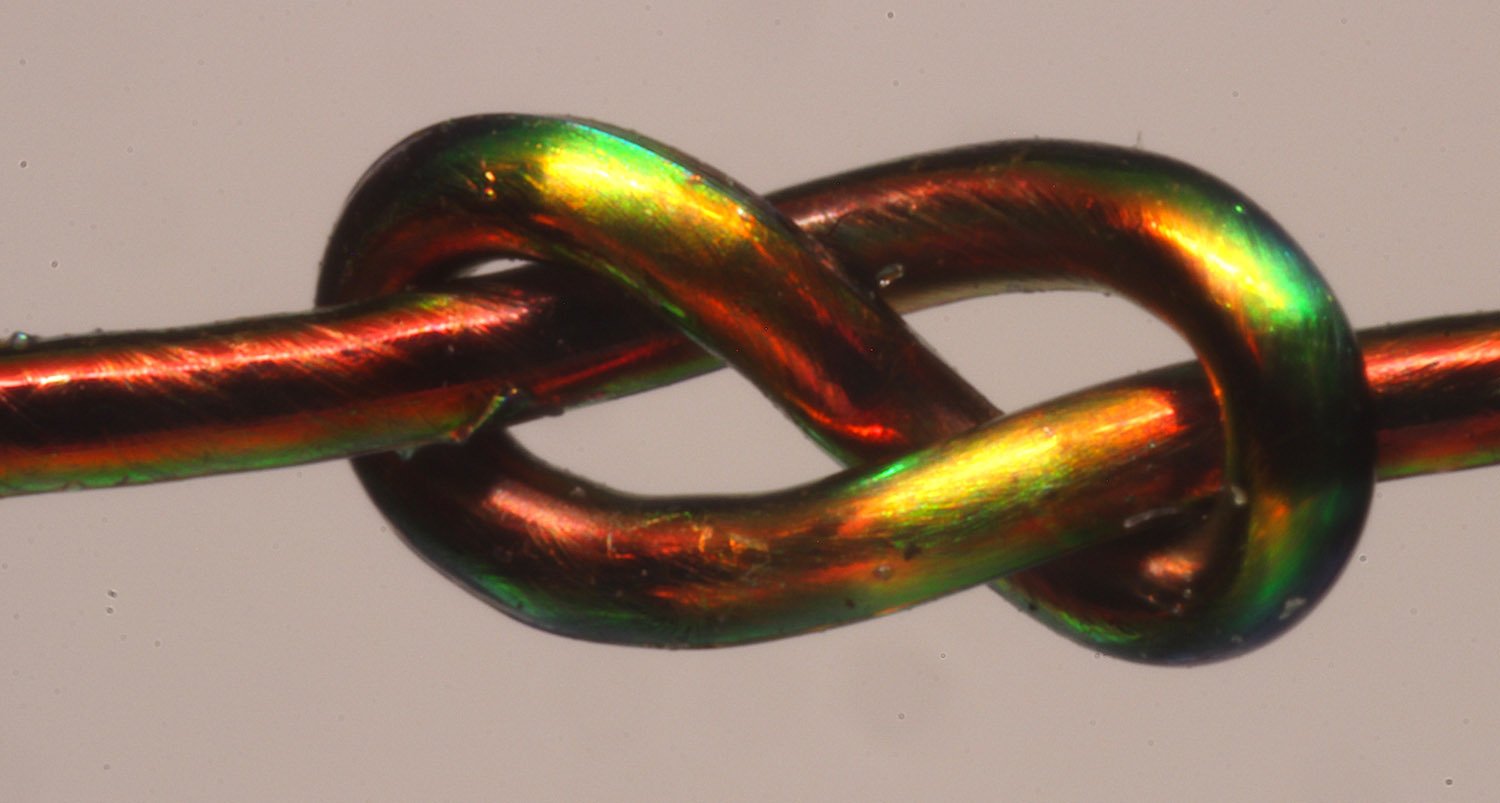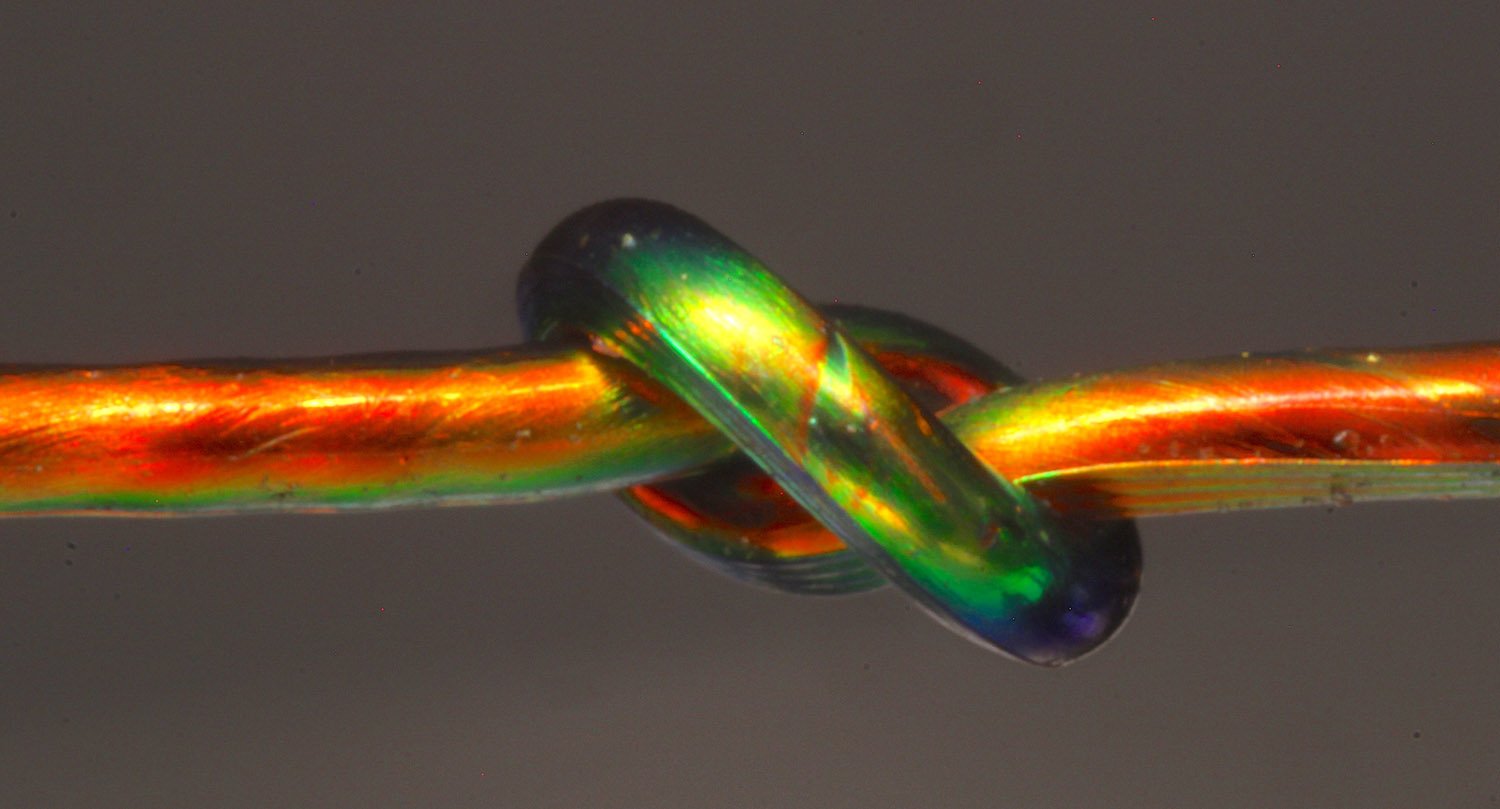Color-changing fibers and mathematical theory combine to disclose the simple rules that govern the strength and stability of commonly used knots, researchers report. The new study addresses a centuries-old mystery – what makes knots work?
Fibers tied into knots and tangles remain one of humanity’s most ancient and enduring technologies and play a ubiquitous, fundamental role in our daily lives. From ships’ sails and shoes to micro-sutures and turbulent quantum liquids, it’s well known that some knots are better suited than others for specific purposes – a fact that’s given rise to a great variety of knotted structures. It’s known that the subtle interaction between topology (how a knot is tied), elasticity and friction give knots their inherent mechanical properties and strength.

[ad_336]
However, there remains no comprehensive mathematical theory capable of fully explaining how knots “work.” Thus, the ability to understand why some knots hold fast while others easily slip currently evades explanation. To address these long-enduring questions, Vishal Patil and colleagues developed an experimental and theoretical analysis that reveals the key rules underlying the mechanical stability of “bend knots,” which are commonly used in both sailing and climbing activities.

[rand_post]
Combining optomechanical experiments using recently developed color-changing photonic fibers, which show stress differences in different parts of a knot and theoretical knot modeling, Patil et al. were able to quantifiably predict the strain distribution in a knotted structure and reveal several key topological factors that determine a knot’s stability.

According to the authors, the framework could be used to design and explore new classes of knots with specific behaviors.